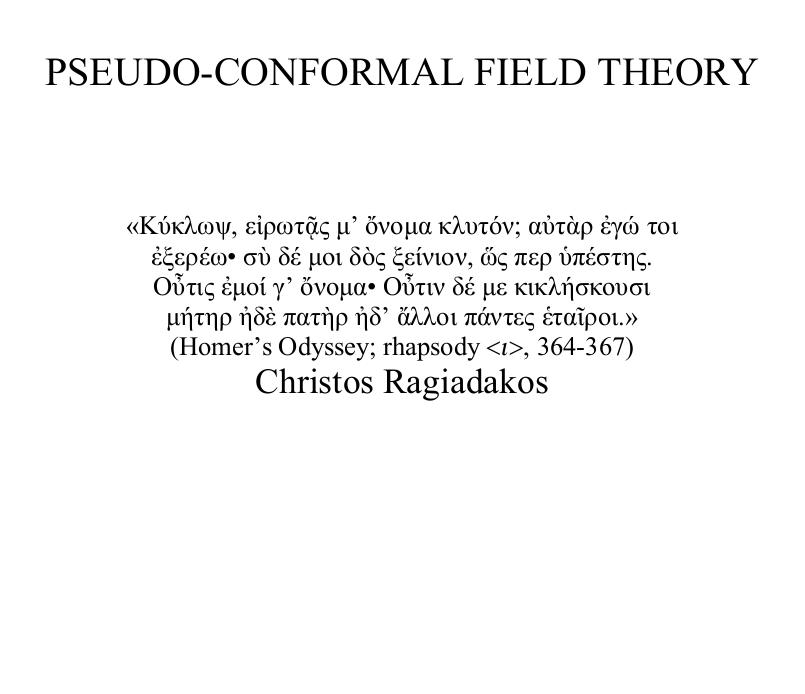The new version uploaded Research eBook on Pseudo-Conformal Field
Theory (PCFT) contains three new results:
1) The electroweak U(2) gauge field is directly related with the tetrad of the
fundamental lorentzian Cauchy-Riemann (LCR) geometric structure of PCFT,
which is also the geodetic and shear-free tetrad of the implied Einstein metric.
The precise forms of the electroweak and Higgs potentials (dressings) in the
electron LCR-structure (soliton sector) are explicitly computed.
General relativists know that in Kerr-Newman manifold the electromagnetic
field is proportional to one of the two real geodetic and shear free null vectors.
The above result indicates that this identification was not a computational
accident.
2) In 1968 Carter analyzed the static axisymmetric Kerr-Newman “spacetime”,
and found that its gyromagnetic ratio is g=2, which coincides with that of the
electron. Then he used the electron data and he computed the parameters
mass m, charge e and Kerr a. He found that the electron Kerr-Newman
manifold had a naked essential singularity, which is not permitted by
riemannian geometry. Such a manifold could not be compatible with the
Hawking-Penrose singularity theorems and the subsequent Penrose’s
censorship hypothesis. In the algebraic context of PCFT, the electron is
implied from a regular quadratic surface of CP(3), with its branch surface
corresponding to the ring singularity. After a ray tracing in unbounded and
bounded realizations of the electron LCR-manifold in the grassmannian
G(4,2), we find no essential singularity, because the LCR-rays pass through
the ring singularity.
3) Quantum mechanics started as a physical theory based on the Hilbert
space of square integrable functions, the states of the physical system. When
Laurant Schwartz gave a precise mathematical definition of the “bra” and “ket”
states of Dirac and his δ(x-y) identity operator, the possibility of a self-
consistent formulation of quantum field theory (QFT) opened up. Stuckelberg
and Bogoliubov formulated the causal approach of the unitary evolution
operator (S-matrix), as a harmonic analysis to the rigged Hilbert-Fock space
of Poincare group representations (free fields). Epstein and Glaser clarified
the “renormalization” process as a proper treatment of the multiplication of the
step distribution with the Wightman distributions. The final improvement came
from Scharf and collaborators who used the BRST fermionic ghosts in an
operational algorithm, which eliminates the unphysical modes of the free
fields. So the perturbative causal formalism was ready to be inverted. It
became the proper mathematical formulation to make harmonic analysis of
the distributional (classical) solitonic special totally real surfaces of the four
dimensional complex manifold, described by PCFT. QFT is just the proper
mathematical treatment of the distributional stable Poincare representations of
PCFT. Let me mention the analogous problem Pythagoras met in the
computation of the hypotenuse sqrt(2) of the equilateral orthogonal triangle.
Recall that he knew the existence of the rational numbers but not the
complete set of real numbers. Near the end of his life, Pythagoras realized
that sqrt(2) was not rational, so he could not measure it. It was Cauchy, who
about 2000 years later solved the completion of the rational numbers to the
real numbers. In the case of generalized functions Gelfand made the
analogous step with his triple Hilbert space. Hence PCFT does not need
quantum axioms to treat its distributional solitonic LCR-surfaces.
The LCR-structure is the fundamental geometric principle of PCFT. Our
universe is an evolving three dimensional sphere SU(2) along R, the universal
covering of U(1). The found description of the standard model of elementary
particles is a great achievement of PCFT. But the interpretation of phenomena
beyond the standard model is indispensable for any further hope to achieve a
viable physical theory.
-
Categories
-
Archives
-

